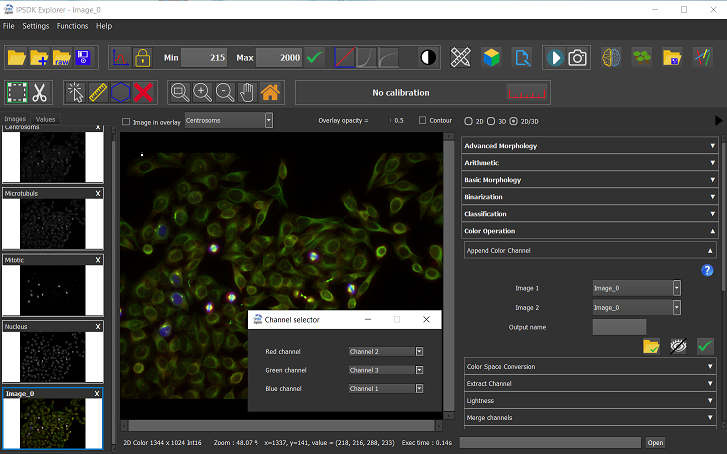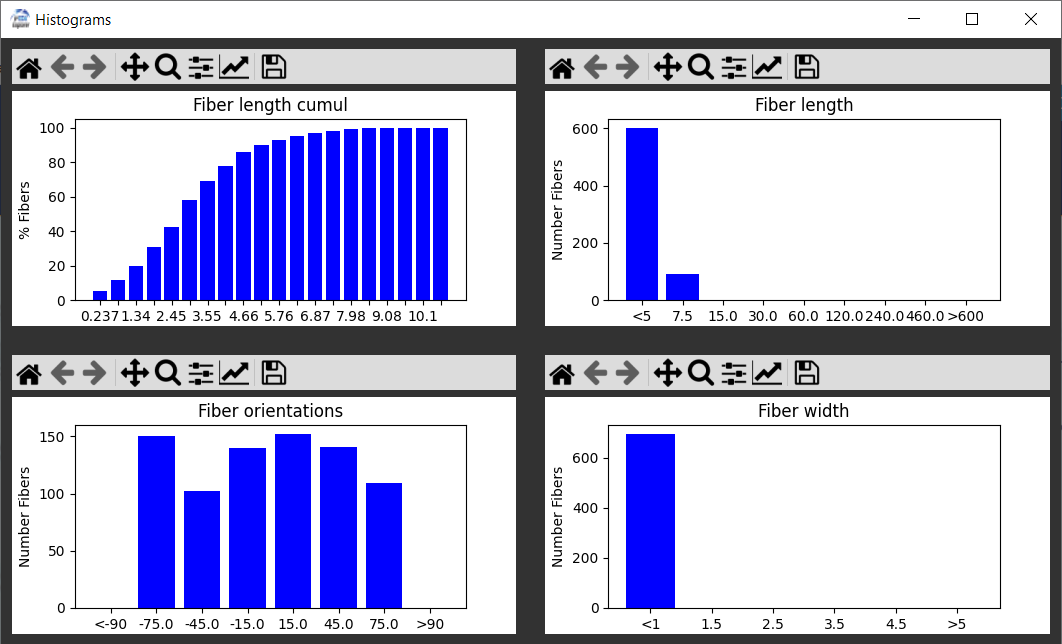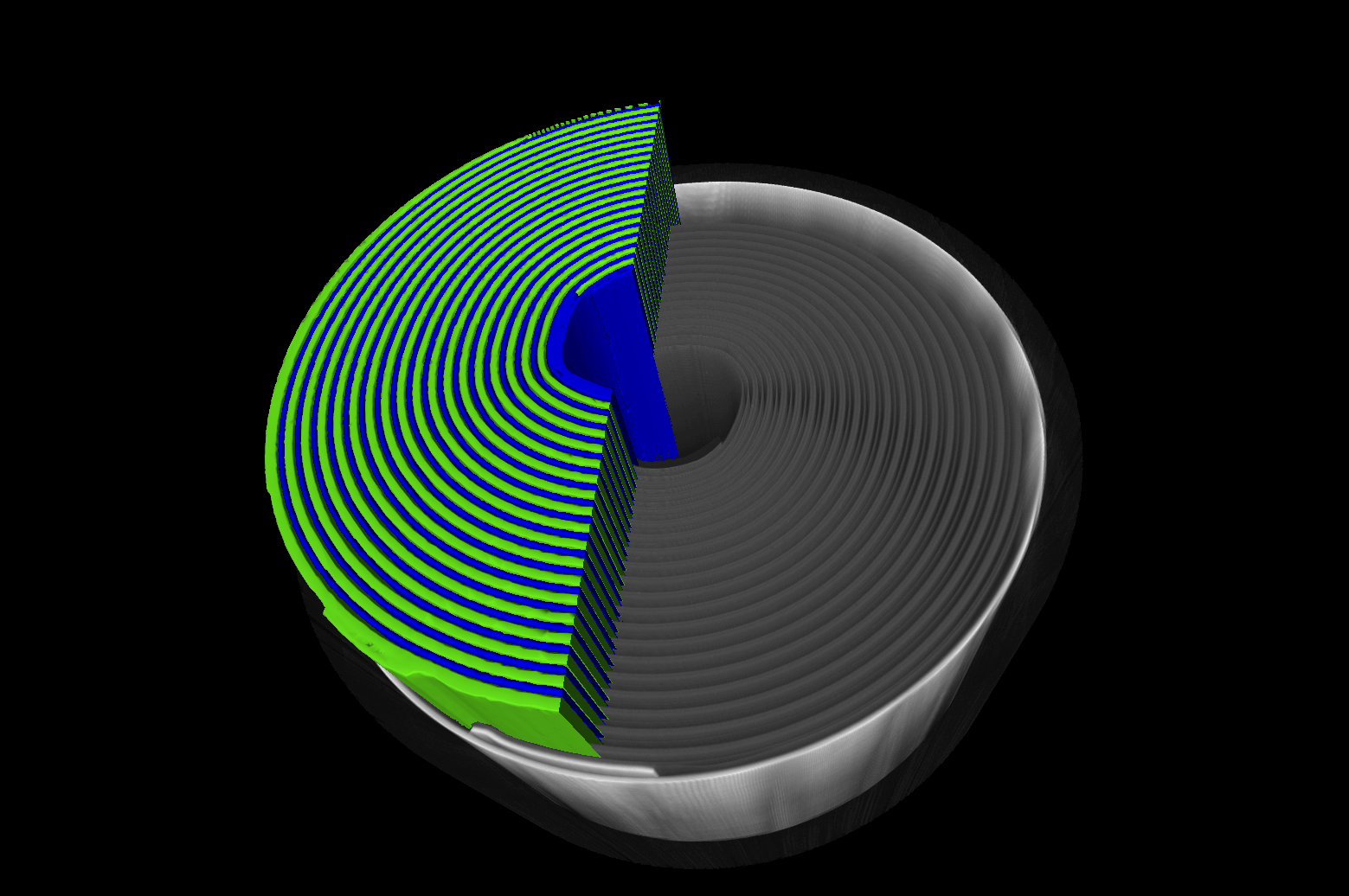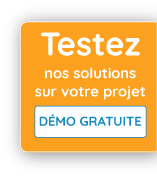IPSDK Explorer
All the image analysis and processing functions of IPSDK Toolkit are available through its user-friendly, ergonomic interface. IPSDK Explorer requires no programming skills.
Available from its interface or in the form of Python or C++ scripts, IPSDK‘s functions will significantly accelerate the speed of your applications.
IPSDK Explorer Highlights
| – Windows and Linux – Fine-tune each treatment – Direct visualization of functions and parameters results – Open Source editable GUI – Full documentation |
– Access to all IPSDK Toolkit 2D/3D functions |

Read more…
IPSDK Explorer displays the results of algorithms directly in its Viewer. This means you can directly define the most appropriate functionality to use, and precisely define the most suitable parameters.
This software solution lets you design scripts using only the mouse. Once the desired result has been obtained, it automatically generates the equivalent Python code. If you have created a Machine Learning model during your process, it will be automatically integrated into the equivalent Python script (to find out more about Machine Learning, click here).
Discover the new 3D visualization features of IPSDK Explorer 4.
Open Source Graphical User Interface
Being Open-source, its graphic interface can be modified and adapted, either by contacting Reactiv’IP or directly by each user. For example, it can be modified from the Python console by adding buttons, parameters or creating interface macros…
Furthermore, as IPSDK Explorer is implemented in Python, it is an open and scalable tool. It can be easily connected to third-party software simply by using the generated scripts or via the graphical user interface.
Finally, you can manually retouch detected elements. You can also define the elements or region of interest to be analyzed directly on the images, and correct automatic element detection if necessary (add, delete, combine, separate elements).


IPSDK Explorer 4 : Functionalities
Discover the all-new 3D Viewer in our IPSDK Explorer 4 software.
It perfectly completes the image processing and analysis tools of the IPSDK Explorer software suite.
- Volume rendering,
- Orthoslices,
- Clipping,
- Surface rendering,
- Mesh simplification,
- Movie maker,
- Fly-through view for 3D visualization.

Presenting IPSDK Explorer‘s script editor
(Explanations available in the subtitles)
This video presents the capabilities of the Python script editor available in IPSDK Explorer:
- Automatic script generation,
- possibility to add easily parameters ,
- display these parameters automatically in the graphical user interface.
SMART Segmentation in IPSDK Explorer.
Machine Learning Automatic pixel segmentation
(Activate Subtitles for more explanations)
Presentation SMART Segmentation module of IPSDK.:
- how to create a model
- how to add new classes
- how to improve the model
- how to use the model
3D visualization with Volume Rendering
In this tutorial, you will learn how to :
- Use the IPSDK 3D Viewer
- Crop your datasets
- Display the X, Y and Z axes of your datase
Mesh extraction, simplification and visualization
In this tutorial, you’ll discover how to :
- Generate a mesh from a label image (Mesh generation)
- Create a hybrid 3D mesh / raw dataset visualization
- Simplify the mesh and display the mesh triangles
Movie Maker for creating your own videos and showcasing your work
In this tutorial, you’ll discover how to:
- Define the views and zooms to be used in the video
- Define how to manage multiple data types (raw, label, mesh…) in the video
- Save and generate the video
- Create or load the video’s “scenario” project
Hover mode for 3D image travel
In this tutorial, we’ll show you how:
- Use normal view mode (fixed camera and moving dataset)
- Fly mode (fixed object and moving camera)
- Navigate within a dataset in Fly mode
- View Fly navigation mode shortcuts
View 3D images in 4-view mode
In this tutorial, you’ll discover how to:
- View a dataset in 4 views (Volume Rendering and 3 orthoslices)
- Adjust the display context synchronously on all 4 views
- Move an orthoslice and see its position on the other 2 orthoslices
4D image management and display (3D image sequence)
In this tutorial, you’ll discover how to:
- View a dataset in 4 views (Volume Rendering and 3 orthoslices)
- Adjust the display context synchronously on all 4 views
- Move an orthoslice and see its position on the other 2 orthoslices


